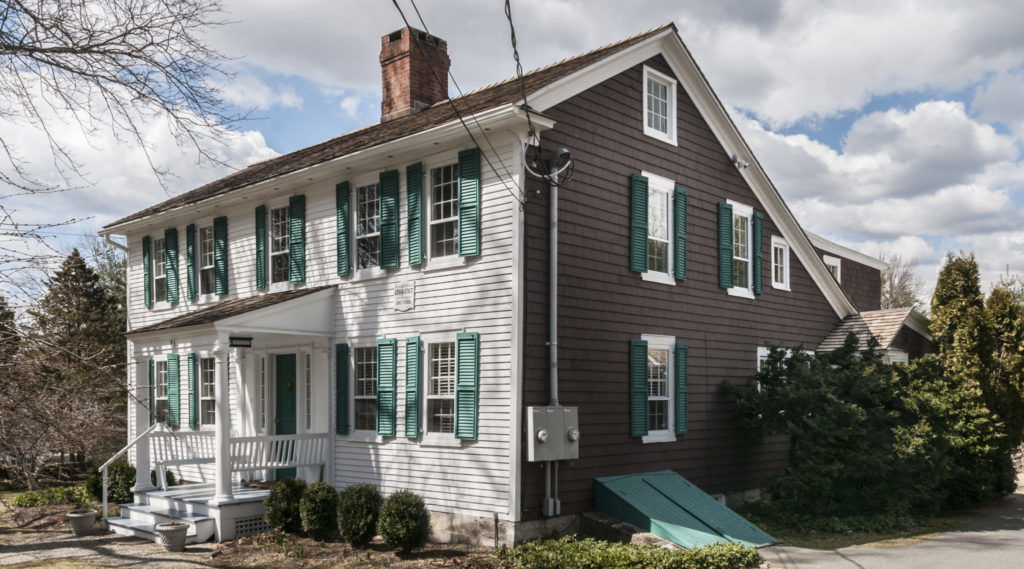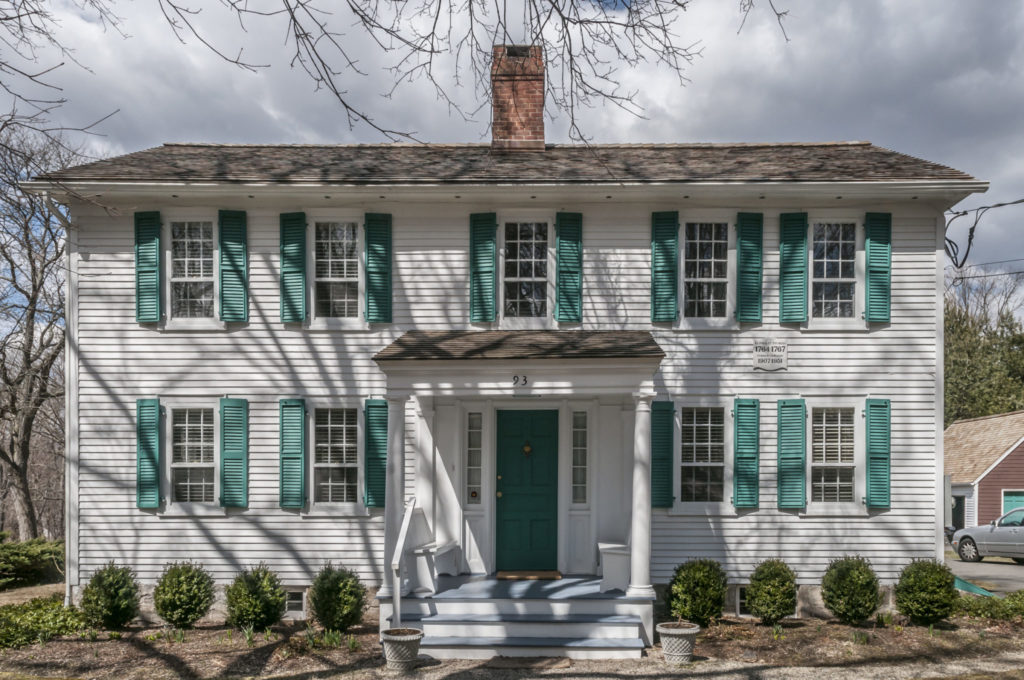Westport, Connecticut, November 11. Today Edward F. Gerber and the Connecticut Trust for Historic Preservation ensured the long-term protection of the Sturges-Wright house through a preservation easement donated to the Trust by Mr. Gerber.
Built in 1764 by Eliphalet Sturges, the Sturges-Wright house was home to several generations of farmers before it was bought in 1907 by George Hand Wright (1872-1951), one of the first artists drawn to Fairfield County in the early 20th century in search of rural peace with easy access to the galleries and publishers of New York. In Westport, Wright, a leading book and magazine illustrator, began to focus instead on pastels, watercolors, and, finally, etchings. He also served as the dean of the art colony that grew up in the town, offering instruction and advice—and sometimes financial assistance—to younger artists. Wright enlarged and remodeled the 18th-century farmhouse into a Colonial Revival saltbox while leaving many original elements unchanged and constructed a studio on the property.
The Sturges-Wright house is individually listed on the National Register of Historic Places, a primarily honorific designation which brings little in the way of protections. In addition, the property is a Westport local historic property, meaning that alterations to the exterior which are visible from a public way must be approved by the town historic district commission.
Under the terms of the preservation easement, a private legal agreement between Mr. Gerber and the Trust which will run with the property, future owners must keep the house in good repair and must obtain permission from the Trust before making any exterior alterations, which must preserve the significant historic and architectural features of the structure. Unlike local designation, the easement applies to the entire exterior of all buildings; it also forbids subdivision of the property.
“As a member of the Connecticut Trust’s board of trustees, I have had all too many opportunities to learn about demolitions of historic resources in Connecticut,” said Mr. Gerber. “For me, the Connecticut Trust’s preservation easement program provides the perfect solution to preserving my house in perpetuity!”
“The Trust’s easement program is one of our most important stewardship tools,” said Jane Montanaro, executive director of the Connecticut Trust. “The Trust is now a partner with the property owner—and all future owners—in caring for the Sturges-Wright house. It is a responsibility and an honor that we embrace.”


Photo Credit: Tod Bryant 
Photo Credit: Tod Bryant
The Connecticut Trust for Historic Preservation was chartered by the Connecticut General Assembly in 1975 as Connecticut’s statewide nonprofit historic preservation organization, to preserve, protect, and promote the buildings, sites, and landscapes that contribute to the heritage and vitality of Connecticut communities. For over four decades, the organization has successfully championed the protection of remarkable community assets all over the state by leveraging funding, advocating, forming partnerships, and promoting stewardship.
The Connecticut Trust’s easement program provides protection and stewardship guidance for 37 properties across Connecticut, with historic structures ranging from an Art Deco office building in New Haven to Colonial-era farmsteads in Ashford and Ledyard, as well as more than 122 acres of land.
For additional information, please contact:
Christopher Wigren
Connecticut Trust for Historic Preservation
940 Whitney Avenue
Hamden, Connecticut 06517
203.562.6312
cwigren@cttrust.org
preservationct.org
A private press visit, or interviews with Edward F. Gerber and leadership at the Connecticut Trust for Historic Preservation, can be coordinated. Photographs can be supplied for use in publications with credit.
—end—

